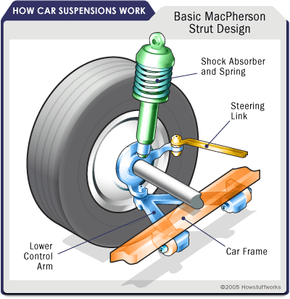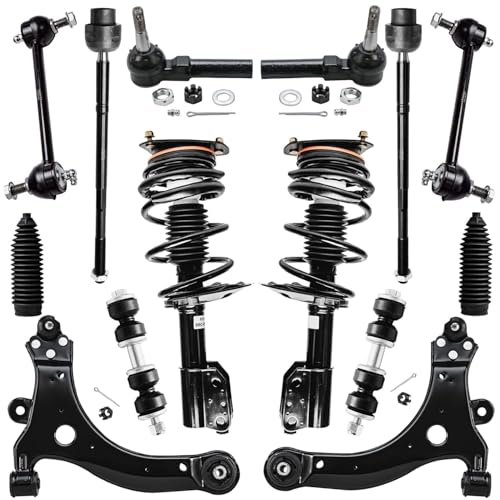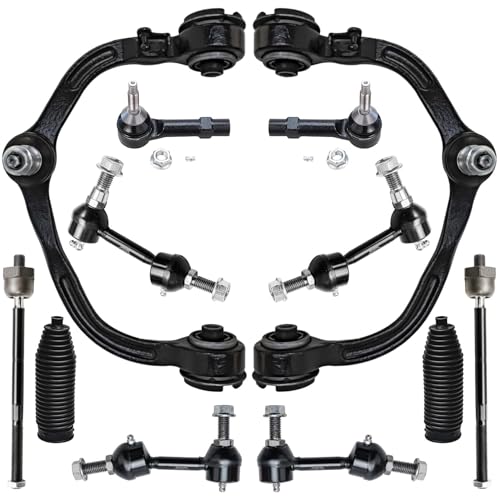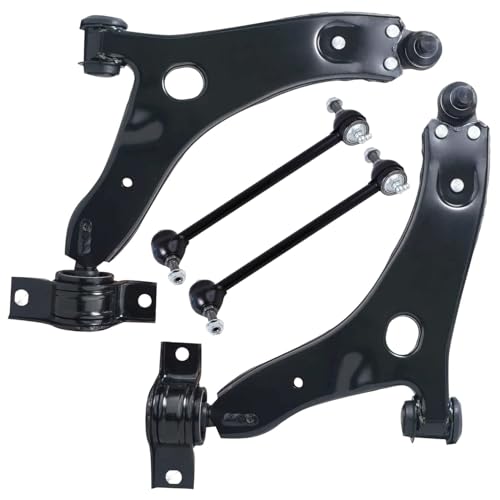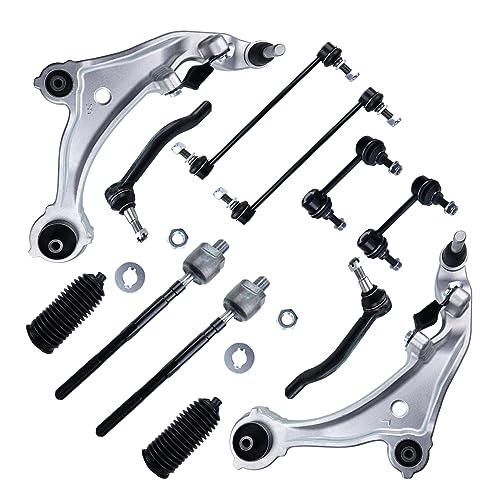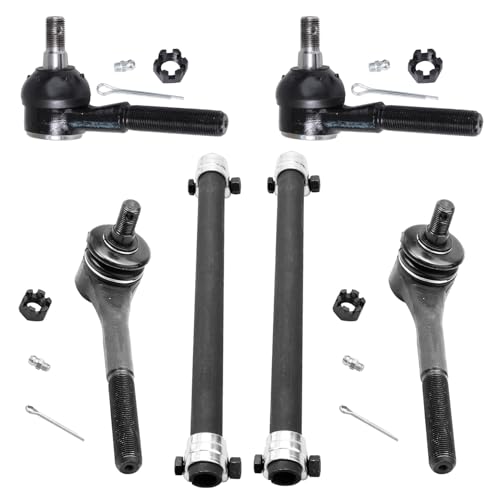Ever wondered what keeps your ride smooth and your car under control? It all comes down to a remarkable system: the suspension. Understanding what is the suspension on a car is the first step to recognizing potential problems, ensuring your safety, and appreciating the complex engineering that makes driving enjoyable. This guide breaks down everything you need to know, from the core purpose and components to common problems and repair costs.
A car’s suspension is the complex system of springs, shock absorbers, and linkages that connects the vehicle to its wheels. Its main jobs are to keep the tires firmly on the road for good handling, provide steering stability, and absorb bumps for a comfortable ride.
Leveraging extensive analysis of established automotive principles and data, this guide unpacks every critical detail about your car’s suspension system. We’ll explore the crucial components that work together, the different types of suspension you’ll find on the road, and the 9 tell-tale signs that your system needs attention. By the end, you’ll have a clear understanding of how to keep your vehicle safe, stable, and comfortable on any road.
Key Facts
- Primary Goal is Grip: The single most important job of a car’s suspension is to maximize the friction between your tires and the road, which is essential for safe steering, braking, and handling.
- Modern Cars Favor Independence: Most modern passenger cars use an independent suspension system. Evidence shows this design provides a significantly smoother ride and better handling because the movement of one wheel doesn’t directly impact the other.
- Shocks Convert Motion to Heat: To stop your car from bouncing endlessly after hitting a bump, shock absorbers convert the kinetic energy from the moving springs into thermal energy (heat) and dissipate it.
- Tires Tell the Story: One of the most common and visible indicators of a suspension problem is uneven or “cupped” tire wear. This often points directly to failing components that can’t hold the wheel alignment correctly.
- Struts are Structural: A strut is more than just a shock absorber; it’s a structural part of the suspension that combines a shock and a spring into a single unit, providing critical support for the vehicle’s chassis.
What is the Suspension on a Car? A Beginner’s Guide
Ever wondered what keeps your ride smooth and your car under control? It all comes down to a remarkable system: the suspension. At its core, a car’s suspension is the complex system of springs, shock absorbers, and linkages that connects the vehicle to its wheels. Its main jobs are to keep the tires firmly on the road for good handling, provide steering stability, and absorb bumps for a comfortable ride. It’s the critical link between you and the road, responsible for both comfort and control.
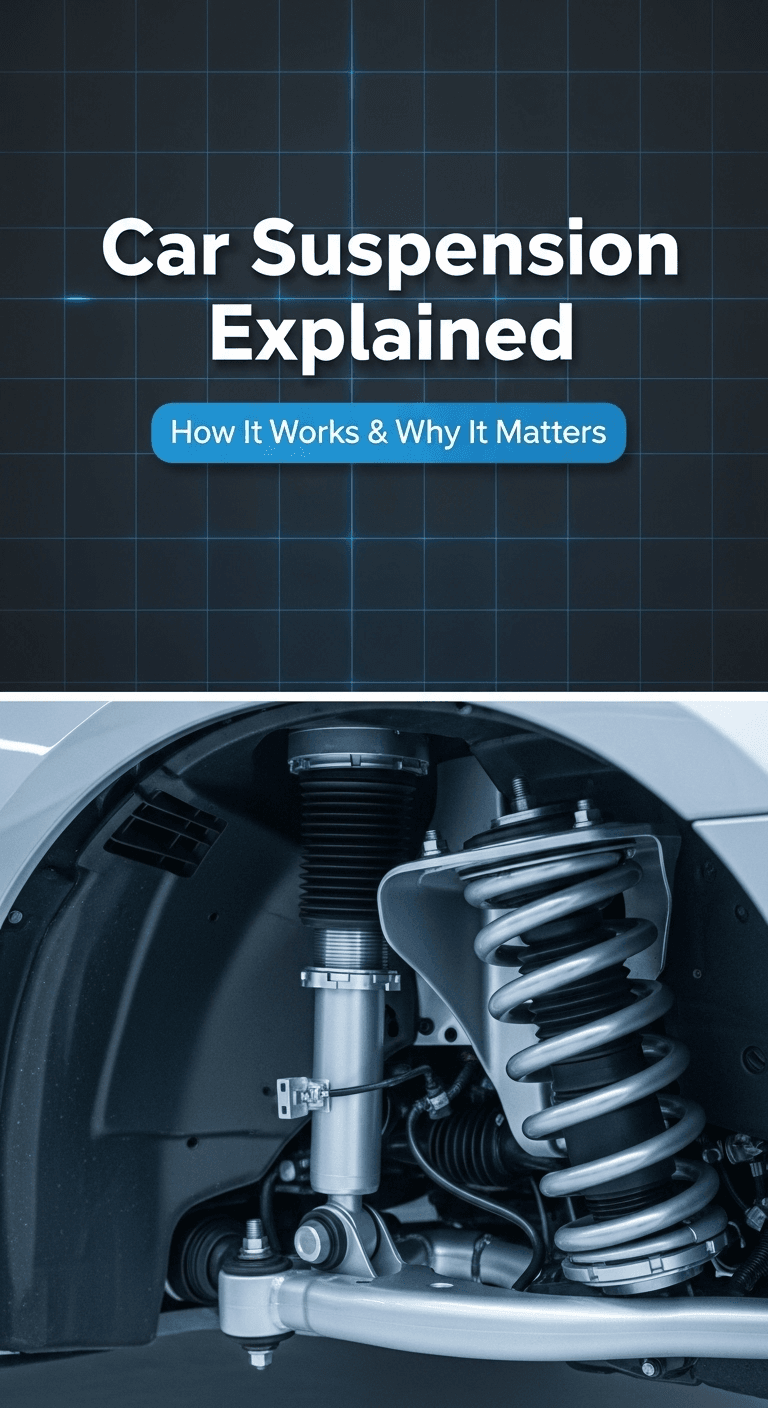
Based on fundamental engineering principles, the purpose of a car’s suspension can be broken down into three primary functions:
- Maximizing Road Contact: The suspension works constantly to push the tires firmly onto the road surface. This maximizes friction, or grip, which is absolutely vital for safe acceleration, braking, and steering.
- Providing Steering Stability: A well-designed suspension maintains the vehicle’s balance and keeps the wheels correctly aligned with the road. This ensures predictable handling, especially during turns and emergency maneuvers.
- Ensuring Passenger Comfort: By absorbing and damping the shocks from potholes, bumps, and uneven surfaces, the suspension isolates the car’s cabin from road imperfections, delivering a smooth and comfortable ride for you and your passengers.
Why Your Car’s Suspension is So Important for a Safe and Smooth Drive
A car’s suspension system is far more than a luxury feature for a cushy ride; it’s one of your vehicle’s most critical safety and performance systems. Understanding what is the suspension on a car and why it’s important helps you appreciate its role in every aspect of driving. From maintaining control in a sudden swerve to preventing premature wear on other components, a healthy suspension is non-negotiable.
Quick Fact:
A well-maintained suspension doesn’t just provide comfort; it’s a primary safety system that ensures your tires maintain the grip needed for safe steering, braking, and acceleration.
Here are the key reasons why your car’s suspension is so vital for a safe and smooth drive:
- Road Holding & Handling
The suspension’s number one job is to ensure all four tires remain in consistent contact with the ground. This constant grip is what allows you to steer accurately, brake effectively, and accelerate without losing control. A failing suspension can cause the tires to lose contact with the road, leading to unpredictable handling and increasing the risk of an accident. -
Ride Quality & Comfort
This is the benefit most drivers notice directly. The springs and shock absorbers in the system absorb the harsh energy from bumps, dips, and rough pavement. This isolates the vehicle’s body and its occupants from jarring impacts, creating a smooth, stable, and comfortable ride quality. -
Vehicle Stability
Your suspension is responsible for managing the vehicle’s weight and balance during motion. It minimizes body roll (the tilting motion during turns), prevents the front end from “diving” during hard braking, and stops the rear end from “squatting” during acceleration. This stability makes the car feel more planted and secure. -
Protection for the Vehicle and Cargo
By absorbing shocks from the road, the suspension system protects the vehicle’s frame and chassis from stress and damage. Industry analysis often indicates that a functional suspension reduces wear and tear on the entire vehicle and protects any cargo being transported from excessive vibration and impact.
The Core Components: A Car Suspension Parts List Explained
To truly understand what is the suspension on a car, you need to know the key players. A vehicle’s suspension isn’t a single part but a coordinated team of components, each with a specific job. They work together to absorb bumps, control movement, and keep your tires glued to the road. Below, we break down the core parts of a car suspension system.
Pro Tip: Think of springs and shock absorbers as a team. The spring takes the big hit from a pothole, and the shock absorber stops the car from bouncing up and down afterward.
This table gives you a scannable car suspension parts list and explains what each component does.
| Component | Primary Function | Common Types / Location |
|---|---|---|
| Springs | Absorb impact energy from bumps and support the vehicle’s weight. | Coil Springs, Leaf Springs, Air Springs, Torsion Bars |
| Shock Absorbers | Control (dampen) the bouncing motion of the springs after a bump. | Hydraulic, Gas-Filled. Found at each wheel. |
| Struts | A structural unit combining a shock absorber and spring into one assembly. | MacPherson Strut. Common in front suspensions. |
| Control Arms | Connect the wheel hub and steering knuckle to the vehicle’s frame. | Upper and Lower Arms (Wishbones). |
| Ball Joints | Act as pivot points between the control arms and steering knuckles. | Sealed or greaseable. Connects wheels to suspension. |
| Sway Bar | A metal rod connecting the left and right wheels to reduce body roll in turns. | Also called an Anti-Roll Bar. Spans across an axle. |
| Bushings | Rubber or polyurethane cushions that absorb vibrations and reduce friction. | Found at connection points of arms, sway bars, etc. |

Springs: The Foundation of Bump Absorption
Springs are the muscle of the suspension system. Their job is to compress and expand to absorb the initial shock of hitting a bump or pothole, while also supporting the entire weight of your vehicle. There are several different types used in cars today.
- Coil Springs: These are the most common type, consisting of a heavy-duty steel wire coiled into a spiral. They are highly effective at absorbing energy and are used in the suspension systems of most modern cars.
- Leaf Springs: Made of several layers of curved metal strips clamped together, leaf springs are very strong and durable. You’ll often find them in the rear suspension of trucks, vans, and older cars.
- Torsion Bars: These are straight bars of steel that twist to absorb shock. One end is attached to the car’s frame and the other to the suspension’s control arm, providing spring action as the bar twists and untwists.
- Air Springs: Instead of steel, these use a flexible rubber bladder filled with compressed air. They provide an exceptionally smooth ride and are often part of adjustable or adaptive suspension systems that can change ride height and firmness.
Shock Absorbers & Struts: Controlling the Bounce
While springs absorb impact, they would continue to bounce up and down without something to control them. That’s the job of shock absorbers, also known as dampers. These hydraulic, oil-filled cylinders resist the spring’s movement, converting the kinetic energy of the bounce into heat, which is then dissipated. This action quickly settles the vehicle after a bump and prevents it from oscillating.
A strut is a structural suspension component that combines a shock absorber and a coil spring into a single, integrated assembly. Unlike a standalone shock absorber, a strut also provides structural support for the suspension and holds the wheel in the correct alignment.
The MacPherson strut is one of the most common suspension designs in the automotive world, especially in front-wheel-drive cars. It acts as both a damping unit and a steering pivot, simplifying the suspension design while providing excellent performance.
Control Arms, Sway Bars, and Joints: The Connective Tissue
The springs and shocks can’t work in isolation. A network of arms, bars, and joints connects them to the wheels and the car’s frame, allowing for controlled movement.
- Control Arms
- Also known as wishbones, these are hinged links that connect the wheel assembly to the vehicle’s frame. They allow the wheels to move up and down in a controlled path while maintaining proper alignment.
Sway Bars - Also called anti-roll bars, this component is a metal rod that connects the left and right wheels on the same axle. Its purpose is to reduce the vehicle’s tilting motion (body roll) during turns by transferring some of the cornering force to the opposite wheel.
Ball Joints - These are the critical pivot points that connect the control arms to the steering knuckles (the part that holds the wheel hub). They function much like a human hip joint, allowing the wheel to steer left and right and move up and down simultaneously.
Understanding the 3 Main Types of Suspension Systems
Not all suspension systems are created equal. Automakers use different designs based on a vehicle’s intended purpose, cost, and performance goals. The designs primarily fall into three categories, defined by how the wheels on the same axle are connected.
Relatable Analogy: Think of a dependent suspension like two people carrying a log on their shoulders—if one person steps up, the other is directly affected. An independent suspension is like each person carrying their own bag—one person’s movement doesn’t disturb the other.
Dependent Suspension
In a dependent system, the left and right wheels are connected by a solid axle. This means that when one wheel hits a bump and moves up, it directly affects the position of the opposite wheel, causing it to tilt. This design is simple, rugged, and cost-effective.
- Benefit: Extremely durable and can handle heavy loads.
- Drawback: Ride quality and handling are compromised, as a bump on one side of the car is felt across the entire axle.
- Example: Solid Axle, commonly found on the rear of heavy-duty trucks and some older cars.
Independent Suspension
This is the most common type found in modern passenger cars. As the name implies, an independent suspension allows each wheel on an axle to move up and down without affecting the other. This provides significant advantages in ride quality and handling.
- Benefit: Better handling on uneven roads and a much smoother, more comfortable ride.
- Drawback: More complex and generally more expensive to manufacture and repair.
- Example: Double Wishbone, MacPherson Strut, and Multi-link suspension systems are all forms of independent suspension.
Semi-Independent Suspension
This design is a hybrid that blends characteristics of both dependent and independent systems. The wheels are connected in a way that allows for some independent movement, but the motion of one wheel still has a minor influence on the other.
- Benefit: A good compromise between the cost and simplicity of a dependent system and the performance of an independent one.
- Drawback: Not as smooth as a fully independent system, but better than a solid axle.
- Example: Twist-Beam or Torsion-Beam Axle, frequently used in the rear suspension of many compact and mid-size front-wheel-drive cars.
9 Common Signs Your Car’s Suspension Has a Problem
Your car’s suspension works hard every time you drive, and its components eventually wear out. Recognizing the early signs of a problem can save you from more expensive repairs and, more importantly, keep you safe. If you’re wondering if your suspension is bad, here are 9 common signs to watch for.
Are you noticing any of these signs on your daily commute? Ignoring them can lead to more costly repairs down the road.
- A Noticeably Rough or Bumpy Ride
This is the most obvious symptom. If you suddenly start feeling every single crack and bump in the road, it’s a strong indication that your shocks or struts are worn out and no longer effectively absorbing impacts. -
The Car Pulls to One Side While Driving
If you’re driving straight but your car consistently drifts or pulls to the left or right, it could be a sign of a bad alignment, uneven tire pressure, or a failing suspension component like a damaged spring or control arm. -
Uneven or Abnormal Tire Wear
Take a close look at your tires. If you see bald spots, scalloping (or “cupping”), or significantly more wear on the inner or outer edges, your suspension is likely not holding the tires at the proper angle to the road. This is a classic sign of bad shocks, struts, or ball joints. -
Clunking or Knocking Noises Over Bumps
Loud clunking, rattling, or knocking sounds when you drive over bumps, potholes, or uneven pavement are a clear signal that something is loose or worn out. Common culprits include worn-out sway bar links, ball joints, or bushings. -
Excessive Bouncing After Hitting a Dip
A healthy suspension should absorb a bump and settle quickly. If your car continues to bounce up and down multiple times after hitting a speed bump or dip, your shocks or struts are failing. A practical approach frequently seen is the “bounce test”: press down hard on one corner of the parked car. If it bounces more than once or twice, the shocks are likely worn. -
Greasy or Oily Shock Absorbers
Your shocks and struts are filled with hydraulic fluid. If you can see an oily or greasy film coating the outside of them, it means their seals have failed and they are leaking. A leaking shock cannot function properly and must be replaced. -
The Car Sits Lower on One Corner
Walk around your parked car on a level surface. If you notice one corner sitting noticeably lower than the others, you likely have a broken or collapsed coil spring. This requires immediate attention. -
Diving, Squatting, or Rolling Excessively
When you brake hard, does the front end of your car dip down significantly (nose dive)? When you accelerate, does the rear end squat? Or does the body lean heavily in turns? These movements indicate that your shocks and struts are too weak to manage the vehicle’s weight transfer. -
Difficulty Steering
If your steering suddenly feels stiff, heavy, or slips, it can be linked to worn suspension parts like ball joints or tie rods that are part of the interconnected suspension and steering systems.
To keep your car handling correctly and your ride smooth, upgrading or replacing worn-out components is essential. Finding a quality kit can simplify the process and ensure all necessary parts are compatible.
FAQs About what is the suspension on a car
Here are some of the most frequently asked questions about car suspension systems, with clear and direct answers to help you understand this critical part of your vehicle.
What happens if a car’s suspension is bad?
A bad suspension can cause a rough ride, unevenly worn tires, poor vehicle control, and unsafe handling, especially in emergency situations. It puts extra stress on other vehicle components, leading to accelerated wear and tear. Ultimately, it compromises both your comfort and your safety on the road.
Can you drive your car with a broken suspension?
No, it is not recommended. A broken suspension makes the car difficult to control, especially in an emergency, and can cause a very rough ride and further damage. A damaged or collapsed spring, for example, will affect the car’s alignment and stability, making it dangerous to operate at normal speeds.
How do you know if the suspension has gone on your car?
You’ll know your suspension may be failing if you hear knocking noises over bumps, feel an excessively bumpy ride, experience poor handling, or see uneven wear on your tires. Other key signs include the vehicle pulling to one side or continuing to bounce long after hitting a dip in the road.
How much does it cost to replace a suspension?
The cost to replace a suspension varies greatly depending on the vehicle, the specific components that have failed, and local labor rates. It’s best to get a professional diagnosis and quote. Replacing a single pair of shock absorbers might cost a few hundred dollars, while a full overhaul involving struts, control arms, and ball joints could cost well over a thousand.
Final Summary: Keeping Your Ride Smooth and Safe
Your car’s suspension is the unsung hero of your vehicle, working silently and constantly to provide the safety, control, and comfort you expect every time you get behind the wheel. From the springs that absorb massive impacts to the shocks that tame the bounce, each component plays a vital role. Understanding what is the suspension on a car is about more than just mechanics; it’s about recognizing how critical this system is for a secure and enjoyable driving experience.
Here are the most important takeaways to remember:
- Suspension = Safety: Its primary job is maximizing tire grip, which is essential for steering, braking, and avoiding accidents.
- Comfort is a Bonus: While a smooth ride is a great benefit, it’s a byproduct of a system designed first and foremost for control.
- Listen to Your Car: Unusual noises, a bouncy ride, or uneven tire wear are not just annoyances—they are direct warnings that your suspension needs attention.
- Maintenance is Key: Regular inspections and timely replacement of worn parts will ensure your suspension functions correctly for years, protecting you and your investment.
Now that you understand what the suspension on your car does, pay attention to how your car feels on the road. A simple inspection can ensure your safety and save you from more expensive repairs.
Last update on 2025-12-28 / Affiliate links / Images from Amazon Product Advertising API
